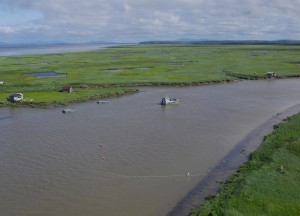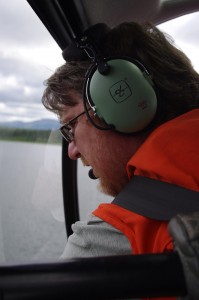
Next summer’s Bristol Bay sockeye run is estimated to number 46.5 million, with about a quarter of those fish headed for the Nushagak District.
Fish and Game says next summer’s expected sockeye return could allow for a harvest of about 30 million fish. Area Management Biologist Tim Sands says a forecast that large typically means that fishing will be aggressive early. That’s so – “We can avoid processor limits, or if we do end up on processor limits, we have escapement to give,” Sands said.
But the forecast for the Nushagak District rivers may throw a wrench in that approach. 10 million reds are forecast for the district, with about 7 and a half million fish expected to return to the Wood River, well beyond the escapement goal range of 700,000 to 1.8 million. The expected return includes a forecast of nearly 5 million fish that have spent two years in the ocean.
“That particular forecast comes from the number of one-ocean fish, jacks for sockeye, that we saw in the Wood River this year,” Sands said.

The Nushagak River run is forecast at 1.7 million sockeye, more than the 900,000 fish at the upper end of its escapement goal. Sands say management can get tricky when there are so many more fish headed to the Wood River than the Nushagak.
“It’s very difficult to catch all the Wood River fish we need to control the Wood River escapement, without catching too many Nushagak River fish,” he said. “That forces us into the Wood River special harvest area. So it’s something we’re really going to have to watch and balance.”
Sands says he’ll wait to dive into next summer’s management until after the board of fisheries meets this winter and makes its decisions on proposed changes – including getting rid of that special harvest area.
“Each manager for their individual districts will come up with a plan, based on whatever regs have changed, as to how we want to approach the season,” Sands said.
The district’s other major river, the Igushik, is expected to have a return of about 1 million fish, leaving 770,000 for harvest while still hitting the 150,000 to 400,000 fish escapement goal.




